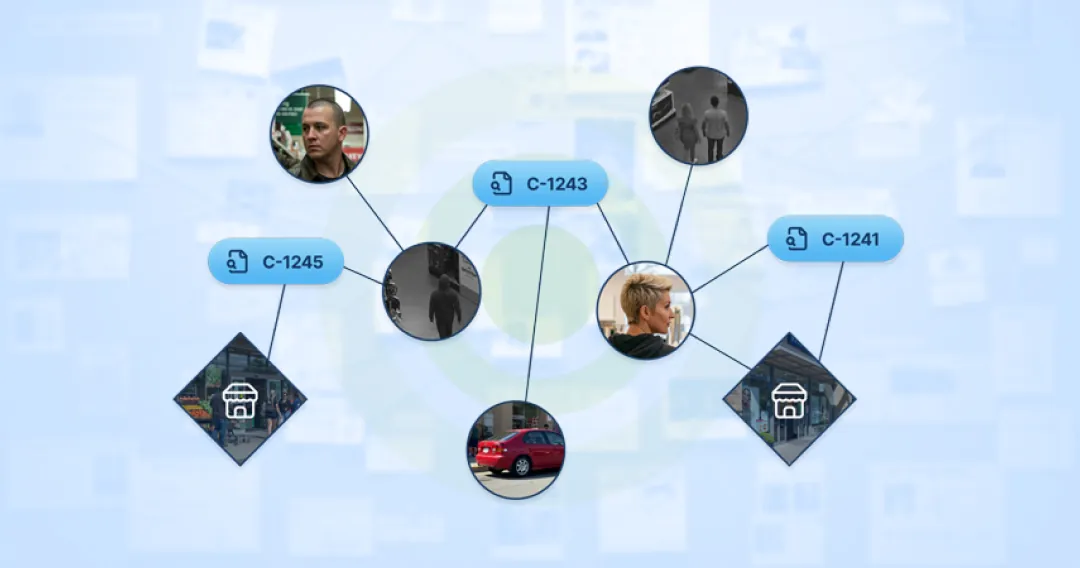Key Takeaways:
-
- Linking offenders is a crucial strategy in loss prevention, helping to identify organized retail crime (ORC) rings and repeat offenders.
- Effective linking involves gathering data from various sources, analyzing patterns, and collaborating with law enforcement.
- ThinkLP provides solutions to link ORC incidents, build comprehensive evidence, and collaborate on solving and preventing crime faster.
- Proactive measures, such as enhanced security and employee training, are essential to preventing repeat offenses.
Why Is Linking Offenders So Important?
Linking offenders involves identifying connections between different incidents, individuals, and locations to build a comprehensive picture of criminal activity. It’s important for several reasons:
-
- Identifies ORC Rings: It helps uncover organized retail crime rings by connecting seemingly isolated incidents to reveal coordinated efforts.
- Tracks Repeat Offenders: It allows retailers to identify individuals who are repeatedly targeting their stores.
- Predicts Future Activity: By understanding patterns of criminal behavior, retailers can predict future activity and take proactive steps to prevent losses.
- Strengthens Cases: Linking offenders provides stronger evidence for law enforcement, increasing the likelihood of successful prosecutions.
What Information Should Be Collected for Effective Linking?
Effective linking requires gathering data from various sources:
-
- Incident Reports: Detailed reports of theft incidents, including descriptions of the suspects, stolen merchandise, and any vehicles involved.
- Surveillance Footage: Video footage of theft incidents can provide valuable information about the suspects and their methods.
- Transaction Data: POS data can reveal suspicious patterns, such as excessive discounts or returns.
- Employee Information: Employee records can help identify potential internal threats.
- External Databases: Information from law enforcement databases and other retailers can provide additional insights into known offenders.
How the Right Data Can Analyze and Link Offenders
Data analysis features play a crucial role in identifying patterns and connections among offenders. Facial recognition software can spot known criminals in surveillance footage, while license plate recognition tracks vehicles linked to thefts. Pattern analysis reveals commonalities in stolen merchandise, timing, and locations of incidents. Social network analysis uncovers relationships within ORC rings by examining connections between individuals. These features, when used together, provide a comprehensive approach to linking offenders and understanding criminal behavior patterns.

How Does ThinkLP Facilitate Linking Offenders?
ThinkLP’s Complex Investigations module helps retailers link cases and resolve complex investigations efficiently. It allows users to build and link incidents across locations, identifying potential ORC and issuing alerts to other locations. The platform supports comprehensive reporting for tracking crime and submitting evidence to law enforcement. It also enables the separation of traditional shoplifting from repeat offenders and ORC groups, facilitating collaboration with law enforcement and providing actionable insights for prevention.
What Are the Benefits of Linking Offenders?
Linking offenders provides several benefits:
Reduced Losses: By identifying and apprehending ORC rings and repeat offenders, retailers can significantly reduce losses due to theft.
Improved Safety: By deterring criminal activity, retailers can create a safer environment for employees and customers.
Increased Efficiency: By streamlining investigations and providing actionable intelligence, retailers can improve the efficiency of their loss prevention efforts.
Stronger Partnerships: Collaborating with law enforcement and other retailers strengthens relationships and improves the overall effectiveness of crime prevention efforts.
How Can Retailers Prevent Repeat Offenses?
In addition to linking offenders, retailers should also implement proactive measures to prevent repeat offenses:
-
- Enhance Security: Increase security measures, such as installing surveillance cameras, hiring security guards, and implementing access control systems.
- Train Employees: Train employees to recognize and respond to suspicious behavior.
- Implement Inventory Controls: Regularly monitor inventory levels and conduct audits to identify discrepancies.
- Collaborate with Law Enforcement: Work closely with law enforcement agencies to share information and coordinate efforts to combat ORC.
Final Thoughts
Linking offenders is a powerful strategy that can help retailers combat ORC, reduce losses, and create a safer environment for employees and customers. By gathering data, analyzing patterns, and collaborating with law enforcement, retailers can uncover the connections between seemingly isolated incidents and take proactive steps to prevent future crime. With the right features and strategies, retailers can effectively protect their businesses from the growing threat of ORC.
Explore ThinkLP’s Blog
Now that you know more about linking offenders, you can find additional insights on loss prevention and safety intelligence on ThinkLP’s blog. The blog features articles, case studies, and industry insights that provide practical tips and strategies for improving your loss prevention efforts.
Request a Demo
If you are interested in how ThinkLP’s software can support your loss prevention initiatives, we invite you to request a demo. Their Loss & Safety Intelligence Platform is designed to integrate with your existing operations, helping you reduce risks and improve efficiency. Reach out today to learn how ThinkLP can assist your organization in optimizing its loss prevention strategy.


